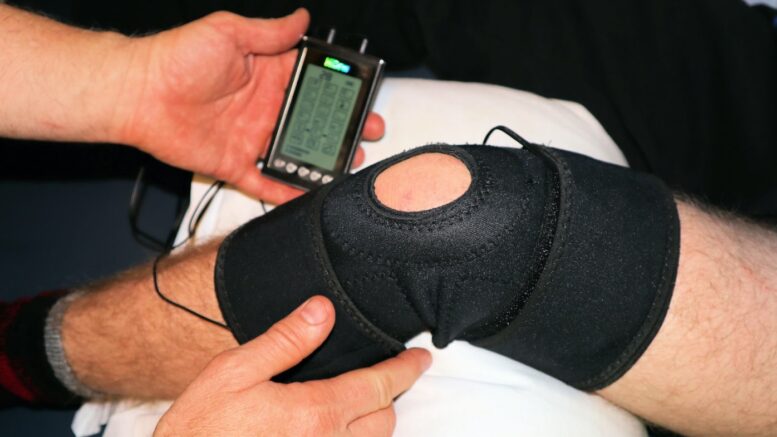A torn meniscus is a common knee injury that affects the cartilage which acts as a cushion between your thigh bone (femur) and shinbone (tibia). This injury can cause pain, swelling, and difficulty in moving the knee. Given the meniscus’s critical role in the knee joint’s function, it’s natural to wonder whether walking on a torn meniscus could exacerbate the issue.
The answer, however, is not straightforward and depends on several factors, including the severity of the tear, the specific location of the injury, and individual pain tolerance.
In some circumstances, stem cell therapy for meniscus tears has the potential to support healing, offering a promising avenue for those seeking to enhance recovery and possibly reduce the need for more invasive treatments.
Understanding the Meniscus Tear
Meniscus tears can occur in various ways, often through athletic activity involving sudden twists or turns. However, they can also result from degenerative processes, especially in older adults.
Symptoms might include a popping sensation, swelling, stiffness, and a feeling that the knee is locked or giving way. The severity of these symptoms can vary widely, influencing the approach to treatment and recovery.
Walking on a Torn Meniscus: Is It Safe?
The consensus among healthcare professionals is that the advisability of walking on a torn meniscus depends on the injury’s specifics.
For minor tears, especially those located in the outer part of the meniscus, where the blood supply is richer, walking might not only be possible but also part of the recovery process. These tears have a better chance of healing on their own, and gentle walking could help maintain joint mobility and muscle strength.
However, for more severe tears or when significant pain and swelling are present, putting weight on the affected leg might not be advisable. In such cases, healthcare providers often recommend limiting weight-bearing activities to prevent further damage.
Healing and Rehabilitation
Healing a torn meniscus without surgery is a viable option for many, particularly when the tear is minor. The healing process can take anywhere from four to eight weeks, during which activities that might strain the knee should be avoided.
The RICE method (Rest, Ice, Compression, Elevation) is a cornerstone of initial treatment, helping to reduce swelling and pain. Over-the-counter pain medication may also be recommended to manage discomfort.
Physical therapy plays a crucial role in the recovery from a meniscus tear, whether surgery was performed or not. Rehabilitation exercises aim to strengthen the muscles around the knee, improving stability and flexibility. A tailored physical therapy program can help ensure a safe return to daily activities and reduce the risk of future injuries.
Advanced Treatments and Recovery
For some, conservative treatments such as physical therapy and the RICE method may be supplemented with advanced options like Platelet-Rich Plasma (PRP) treatments. PRP involves injecting a concentration of the patient’s own platelets into the injured area to promote healing and reduce inflammation.
This treatment has shown promise in accelerating the recovery process and improving outcomes for those with meniscus tears.
When to Walk and When to Wait
The decision to walk on a torn meniscus should always be made in consultation with a healthcare provider. They can assess the injury’s severity, your overall health, and the risk of further damage.
In general, a period of reduced activity is recommended immediately following the injury, with a gradual return to walking as symptoms allow. Using supportive devices like crutches or a knee brace may be advised to help offload the injured meniscus during the initial recovery phase.
Listening to Your Body
An essential aspect of recovering from a meniscus tear is paying close attention to your body’s signals. Swelling, increased pain, or a sensation of instability in the knee are signs that you may be pushing too hard and risking further injury.
On the flip side, gradual improvements in these symptoms can indicate that your recovery is on track.
Conclusion
Walking on a torn meniscus can be part of the recovery process, but it’s crucial to approach this activity with caution. The severity and location of the tear, along with individual factors such as pain tolerance and overall health, will determine the best path forward.
Many individuals can return to their normal activities without exacerbating their injuries by following a healthcare provider’s guidance, employing conservative treatment methods, and engaging in physical therapy.
Remember, each person’s recovery journey is unique, and what works for one individual may not be suitable for another. Listening to your body and communicating with your healthcare team is key to successfully navigating the path to recovery.
Article edited and fact checked by our editorial team.
References:
- Anderson AF, Anderson CN. Correlation of meniscal and articular cartilage injuries in children and adolescents with timing of anterior cruciate ligament reconstruction. Am J Sports Med. 2015;43(2):275–281.
- Kopf, S., Beaufils, P., Hirschmann, M.T. et al. Management of traumatic meniscus tears: the 2019 ESSKA meniscus consensus. Knee Surg Sports Traumatol Arthrosc 28, 1177–1194 (2020). https://doi.org/10.1007/s00167-020-05847-3
- “Anatomy of Meniscus” 1994. May. 21011. Anatomy, Meniscal Tear.
- Zhang S, Chen G, Li R, Yang C, Zheng J, Wang C, Lu J, Zhang Z, Shang X, Zhang H, Wang W, Li W, Huang J, Zhang Y, Wang J, Wang Y, Zheng X, Chen S, Li J, Hua Y. Guidelines on the Diagnosis and Treatment of Lateral Meniscal Lesions: A Consensus Statement by the Chinese Society of Sports Medicine. Orthop J Sports Med. 2022 Dec 9;10(12):23259671221138082. doi: 10.1177/23259671221138082. PMID: 36532151; PMCID: PMC9747892.
- Johns Hopkin Medicine. Torn Meniscus. The Johns Hopkins University. Retrieved on March 2024 from: https://www.hopkinsmedicine.org/health/conditions-and-diseases/torn-meniscus
